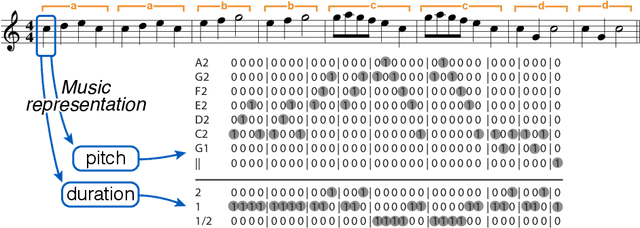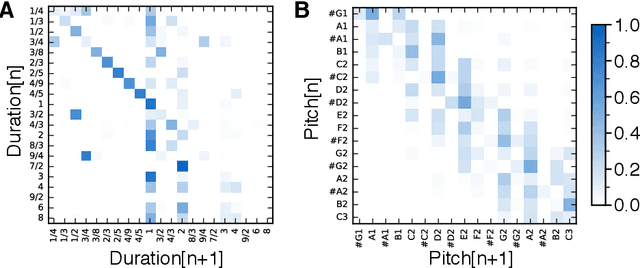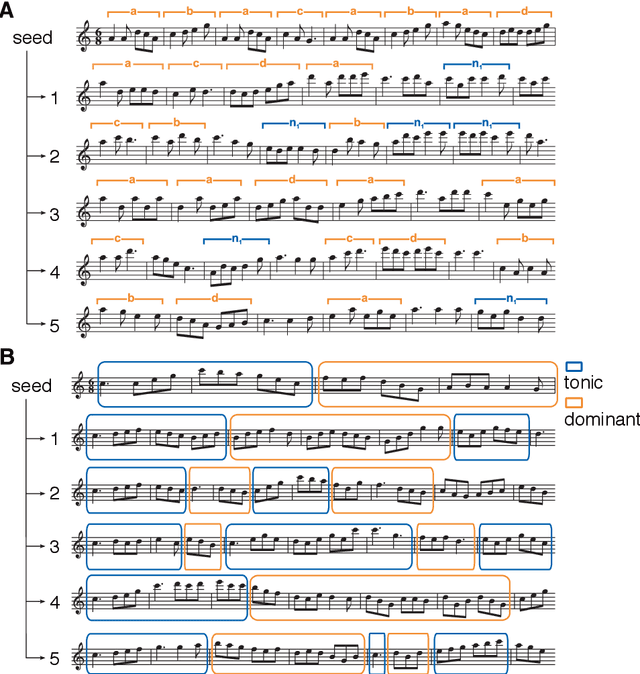Alexander Seeholzer
Working memory facilitates reward-modulated Hebbian learning in recurrent neural networks
Oct 23, 2019


Abstract:Reservoir computing is a powerful tool to explain how the brain learns temporal sequences, such as movements, but existing learning schemes are either biologically implausible or too inefficient to explain animal performance. We show that a network can learn complicated sequences with a reward-modulated Hebbian learning rule if the network of reservoir neurons is combined with a second network that serves as a dynamic working memory and provides a spatio-temporal backbone signal to the reservoir. In combination with the working memory, reward-modulated Hebbian learning of the readout neurons performs as well as FORCE learning, but with the advantage of a biologically plausible interpretation of both the learning rule and the learning paradigm.
Algorithmic Composition of Melodies with Deep Recurrent Neural Networks
Jun 23, 2016



Abstract:A big challenge in algorithmic composition is to devise a model that is both easily trainable and able to reproduce the long-range temporal dependencies typical of music. Here we investigate how artificial neural networks can be trained on a large corpus of melodies and turned into automated music composers able to generate new melodies coherent with the style they have been trained on. We employ gated recurrent unit networks that have been shown to be particularly efficient in learning complex sequential activations with arbitrary long time lags. Our model processes rhythm and melody in parallel while modeling the relation between these two features. Using such an approach, we were able to generate interesting complete melodies or suggest possible continuations of a melody fragment that is coherent with the characteristics of the fragment itself.
 Add to Chrome
Add to Chrome Add to Firefox
Add to Firefox Add to Edge
Add to Edge